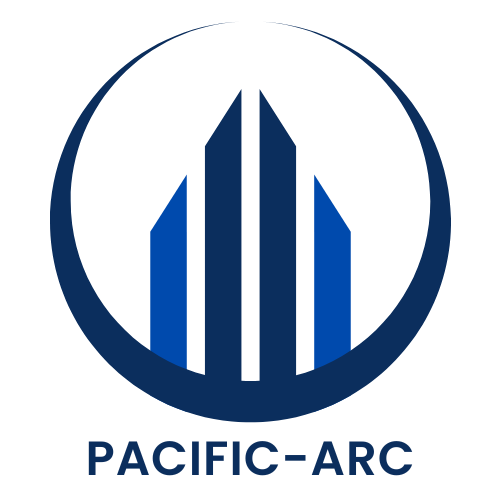Dreaming of becoming a landlord but feeling daunted by the down payment? You’re not alone. Many aspiring property moguls find themselves staring at their savings account like it’s a magic eight ball—full of uncertainty and not quite enough cash. But fear not! With the right strategies, that elusive down payment can be within reach faster than you can say “passive income.”
Table of Contents
ToggleUnderstanding Down Payments
Down payments play a crucial role in securing rental properties. They represent the initial upfront payment required when purchasing real estate.
What Is a Down Payment?
A down payment refers to a percentage of a property’s purchase price paid upfront by the buyer. Typically, this amount ranges from 3% to 20% of the total purchase price, though specific requirements may vary by lender. Buyers often finance the remaining balance through a mortgage. Securing a larger down payment can lead to favorable mortgage rates and lower monthly payments. Understanding the exact amount needed helps in planning finances effectively.
Importance of a Down Payment in Real Estate
A down payment holds significant weight in the real estate transaction process. It demonstrates the buyer’s commitment, which can enhance credibility with sellers and lenders. Larger down payments often reduce borrowing costs and monthly mortgage payments, making investment more manageable. Additionally, substantial down payments can help avoid private mortgage insurance (PMI), further lowering overall costs. Ultimately, this initial investment influences the buyer’s financial stability and long-term success in property ownership.
Savings Strategies for Your Down Payment

Achieving a down payment for a rental property demands strategic planning. Utilizing effective savings strategies strengthens the path toward reaching financial goals.
Creating a Budget
Establishing a budget provides clarity on monthly expenses and savings potential. Identify fixed costs like rent and utilities alongside variable costs such as entertainment or dining out. Assign a specific amount for savings each month toward the down payment. Monitoring spending habits fosters accountability and aids in adjusting non-essential expenses. Tracking progress through budgeting apps or spreadsheets offers insights into saving trends. The clearer the budget, the easier it is to initiate and maintain a savings routine.
Automating Savings
Automating savings streamlines the deposit process into a dedicated account. By setting up automatic transfers from checking to savings, consistency becomes effortless. Consider scheduling transfers for payday, optimizing the savings timeline. With automation in place, individuals can prioritize down payment goals without constant deliberation. Periodically reviewing and adjusting these transfers ensures they align with changing financial circumstances. As savings grows, so does the potential for a substantial down payment.
Exploring Financial Assistance Options
Various financial assistance options provide pathways to securing a down payment for a rental property. These resources can ease the burden of upfront costs.
FHA Loans and Government Programs
FHA loans serve as an accessible option for first-time landlords. With down payments as low as 3.5%, these loans facilitate home purchases for individuals with lower credit scores. Additional government programs offer tailored assistance, including the USDA and VA loans, designed for specific populations or locations. Applicants may find these programs include benefits such as reduced interest rates and no required private mortgage insurance. Understanding eligibility criteria and application processes ensures that potential buyers can leverage these affordable financing options effectively.
Grants and Down Payment Assistance
Grants and down payment assistance programs significantly impact aspiring landlords. Many local and state governments provide funds that do not require repayment. These initiatives often target low-to-moderate-income applicants, enhancing homeownership opportunities. Numerous nonprofit organizations also offer assistance, helping buyers access necessary funds. Researching available programs in one’s area can yield substantial benefits. By taking advantage of these resources, potential property owners can reduce financial barriers that hinder investment in rental properties.
Alternative Funding Methods
Several alternative funding methods can aid in securing a down payment for a rental property. Exploring these options often provides aspiring landlords with the financial leverage needed to invest in real estate.
Borrowing from Retirement Accounts
Individuals can access funds from retirement accounts such as a 401(k) or IRA to cover down payments. Typically, a 401(k) plan allows for loans up to 50% of the vested balance, enabling quicker access to necessary capital. On the other hand, IRA holders may withdraw up to $10,000 for a first-time home purchase without penalty, provided they meet specific qualifications. It’s essential to evaluate the impact of these withdrawals on long-term retirement savings. Consulting a financial advisor before proceeding can ensure informed decisions and help weigh the benefits against potential setbacks.
Getting a Personal Loan
Securing a personal loan represents another viable option for down payments. Lenders often offer personal loans with fixed interest rates and flexible repayment terms, allowing individuals to borrow the needed funds. Interest rates depend on the borrower’s creditworthiness and prevailing market conditions. Choosing this route can lead to relatively quick access to cash, making it appealing for timely property purchases. Potential borrowers should consider the total repayment costs, including fees, to evaluate long-term affordability. Comparing offers from multiple lenders can help find the most favorable terms tailored to individual financial situations.
Tips for a Successful Down Payment
Effective planning maximizes the potential for achieving a down payment on a rental property. Applying these strategies simplifies the process and enhances financial readiness.
Improving Your Credit Score
Strengthening a credit score positively impacts mortgage options. Regularly checking credit reports helps identify inaccuracies that might lower scores. Responsible credit usage, like timely payments and keeping credit utilization low, builds a strong history. Diversifying types of credit, such as revolving and installment accounts, reinforces this stability. A higher credit score can lead to lower interest rates, resulting in substantial savings over time.
Consideration of Investment Partners
Bringing in investment partners can ease the financial burden of a down payment. Partners contribute capital, reducing individual financial obligations. Assessing potential partners for shared goals and commitment ensures a smooth collaboration. Drafting clear agreements protects all parties and defines expectations. Shared investments can also lead to greater purchasing power, allowing for better property acquisition opportunities and overall success.
Achieving a down payment for a rental property is within reach for aspiring landlords. By implementing effective savings strategies and exploring financial assistance options, individuals can navigate the path to property ownership with confidence.
Utilizing tools like budgeting and automated savings can streamline the process while improving credit scores enhances mortgage opportunities. Additionally, considering alternative funding methods and potential investment partners can further ease financial burdens.
With the right approach and resources, anyone can turn their rental property dreams into reality, paving the way for long-term financial success and passive income.





